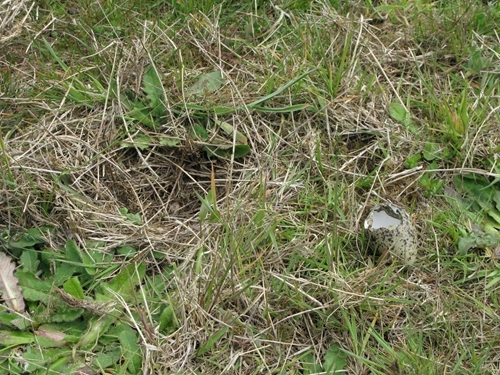The GWCT has been at the forefront of understanding predator behaviour and developing effective, humane methods for reducing predator impacts on wildlife for many years. The development of the GWCT Mink Raft is a classic example of the development of a conservation tool to aid water vole conservation and re-introductions by providing an efficient means of detecting mink.

A lapwing nest showing evidence of corvid predation (Photo: Andrew Hoodless)
We aim to demonstrate that similar approaches can be adopted with other predators such as foxes and small mustelids. The red fox has been identified as the main predator of lapwing clutches in several recent studies. However, very little is known about fox hunting behaviour, particularly in wet grassland habitats. Foxes in the Avon Valley will be fitted with GPS collars to evaluate their use of particular habitat features in this landscape. This information will be used to inform how we approach the issue of mammalian predator exclusion.
As we learn more about how different predators use habitat features in these floodplain landscapes and which measures are most effective at preventing predation by particular predators, we will develop guidelines for predator monitoring and effective exclusion by other land managers.